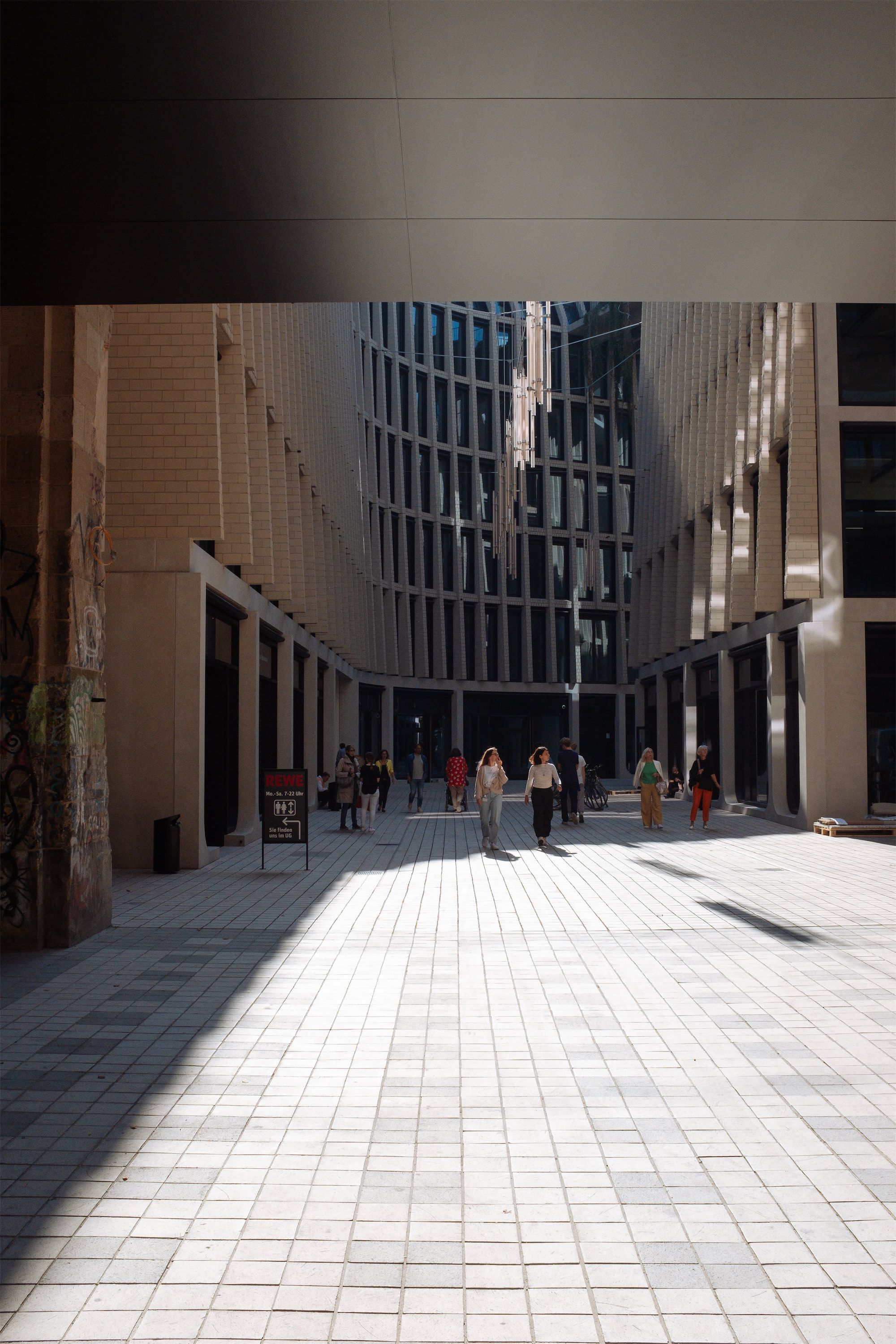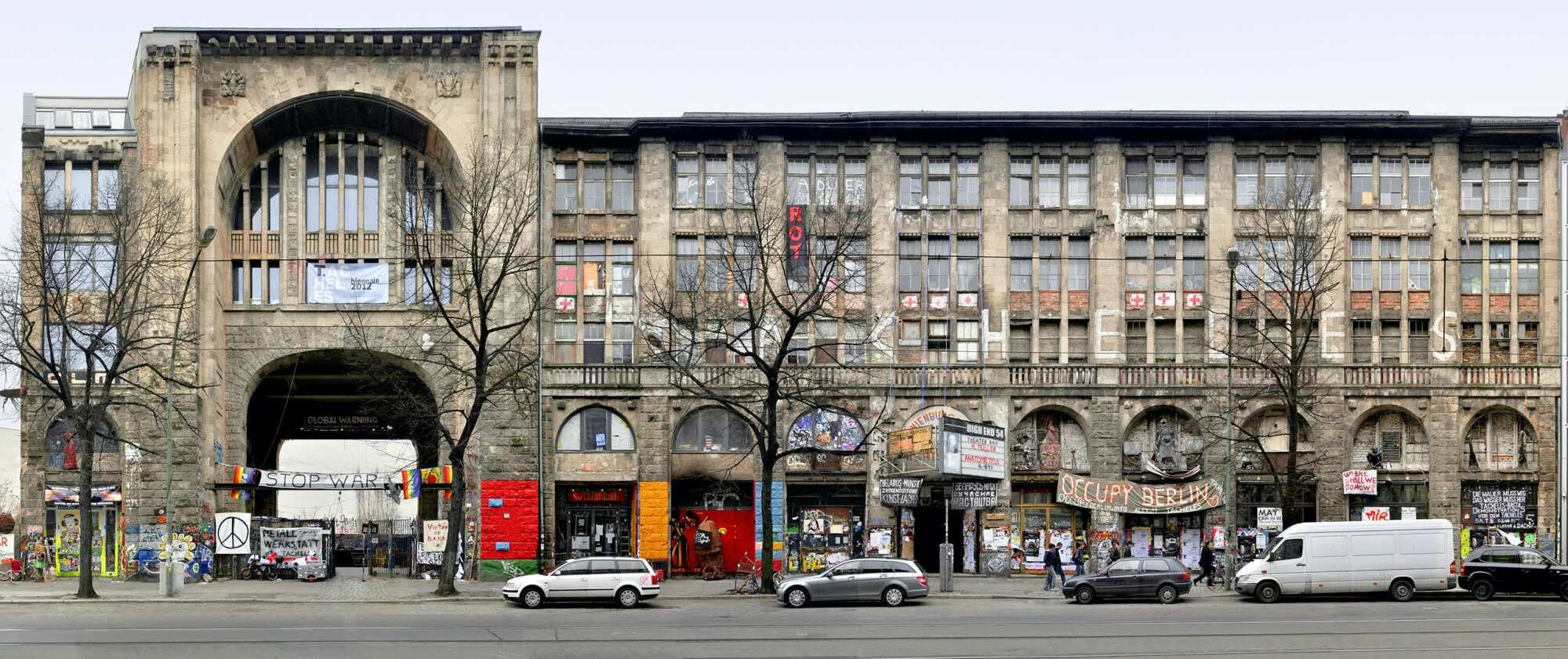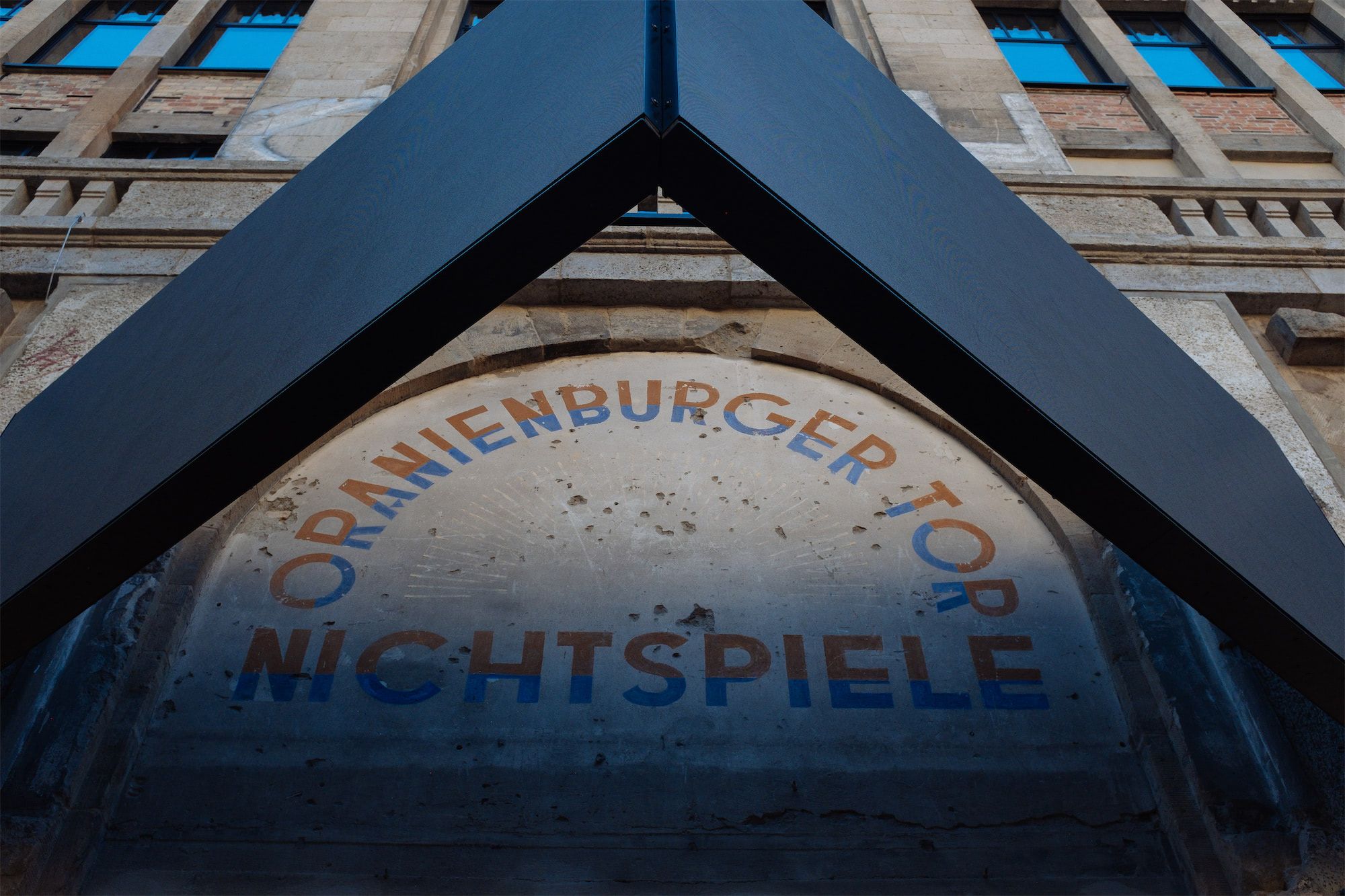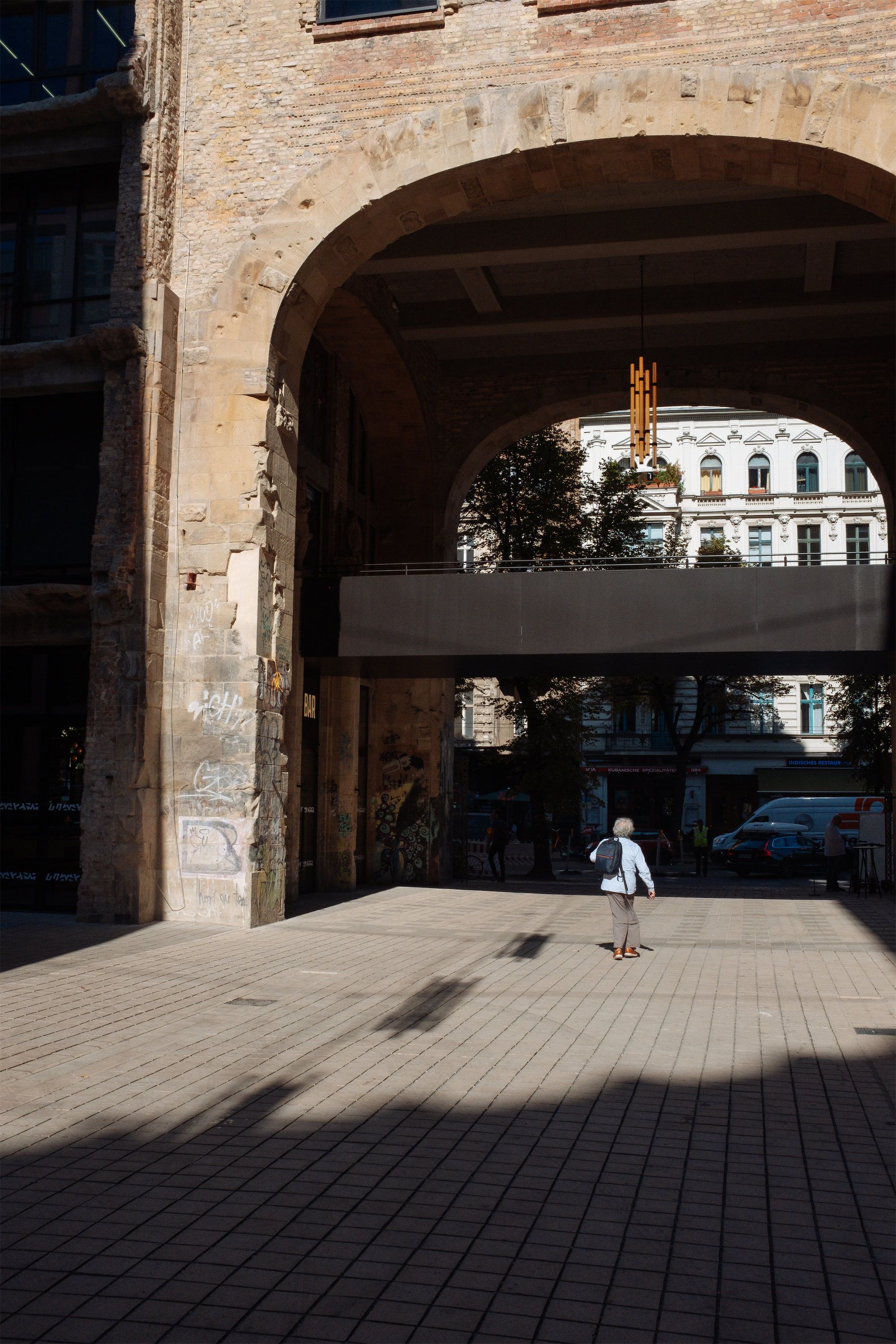The Neoliberal Museum
September 26, 2023 Berlin Authenticity Jörg M. Colberg Photography Gentrification


Earlier this month, Fotografiska Berlin opened its doors to the public. Housed in the formerly occupied Kunsthaus Tacheles, which itself grew out of the ruins of the former Friedrichstraßenpassage, it’s the crown jewel of a controversial district redevelopment project. And the most visible mark of gentrification in today’s Berlin.
 Tacheles, before renovation. Courtesy of Herzog & de Meuron architects.
Tacheles, before renovation. Courtesy of Herzog & de Meuron architects.
Although we’re talking about a museum, it’s important to look at the overall project first: The Kunsthaus Tacheles was a beloved anarcho art space that had been occupied by artists in 1990 to prevent the scheduled demolition of a building that was heavily damaged in the war. Situated in the center of Berlin, the occupied house stood out not just for its sheer size (it occupies almost an entire city block), but also for its graffitied façade, cinema, sculpture garden, and lefty cafés.
 Friedrichstraßenpassage, before the war.
Friedrichstraßenpassage, before the war.
I went there a few times before it was shuttered in 2012 (somehow always in the depths of winter), and though the place was certainly a ruin, it also encapsulated a specific vibe the city had after the fall of the wall. “In Berlin, everything’s allowed, if briefly,” my then-housemate used to say. Tacheles exemplified that. Walking through that giant arch entrance from Oranienburger Straße was like passing through a portal: You entered a staircase reeking of urine, there was graffiti everywhere, but you could peek into different artists’ studios, see surprising exhibits, or hang out among the rough metal statues in the garden.
 Tacheles staircase. CC BY-SA 3.0 Mario Duhanic
Tacheles staircase. CC BY-SA 3.0 Mario Duhanic
In 2012, the owners of the property closed the place and had the artists evicted, making the whole building off-limits1. The property and the surrounding plots of land (mostly parking lots, if memory serves) were then sold to a New York-based developer, who ended up branding the redevelopment project Am Tacheles (At the Tacheles), swiftly appropriating the artist’s building name for their project.
Their plan: Build apartments and retail space, but also include some cultural use—if only to appease everyone mad about the loss of the art space.
It’s an open-air gentrification showcase, just as predicable as the exhibits in the new museum.
Fast forward to the present, and the whole areal is opening up. Some construction remains ongoing, but you can go and experience the redeveloped “city quarter” for yourself: Walk through those gates once more, and you’re no longer in a sculpture garden facing an empty lot but in a passageway lined with smooth concrete walls and glass windows on either side.
To their credit, the developers tried to bring back the overall idea of the former passageway, but of course the buildings are from the present time. All of it would be immediately forgettable if it wasn’t for the former Kunsthaus as a centerpiece, with its roughness preserved.


Near the main entrance, just off Oranienburger Straße, you now find Fotografiska, a private photography museum with its roots in Sweden. And though I should be happy about a new museum, I don’t find much to applaud here2. The critic Jörg M. Colberg sums up succinctly why the museum isn’t even about photography but rather just a puzzle piece in the overall redevelopment:
The main function is something different: it’s commercial. Fotografiska Berlin is part of a real-estate development in Berlin that is geared towards the very wealthy. The museum’s role is to serve as an ornament, as a token. It provides a veneer of culture in an environment that otherwise is devoid of it. Not every neoliberal museum is attached to an effort to zhuzh up real estate, though. But you want to always see whether there might not be some other purpose when another one of these places opens somewhere.
Neoliberal capitalism will happily appropriate anything and use it for its own goals (well, almost anything, I’ll get to that). And art in general provides a brilliant opportunity to kill a number of birds with a single stone: you can invest in art (satisfying your financial needs). But through that investment you can also buy cultural and societal cachet, and you can showcase how much you care or pretend to care about larger societal themes (such as diversity or feminism or whatever else).
Colberg’s article (which is very much worth reading) is about Fotografiska in particular but I find that his term “The Neoliberal Museum” applies just as well to general development we find at Oranienburger Straße, or even the whole Mitte district. The edgy Tacheles is but a token exhibit, providing authenticity among the anonymous buildings surrounding it. It’s an open-air gentrification showcase, just as predicable as the exhibits in the new museum.3

When I went to take photos in the afternoon, I was struck by just how different the city now looks, how much Berlin is transforming. The empty spaces, overgrown lots, and quirky places are being swapped—one “redeveloped quarter” at a time—for a city that’s very different in character. The gaps between buildings disappear. The crowd changes.
Thinking about all this made me remember an altogether different place with a very different story. The former public swimming pool in the Wedding district first closed, then became a notoriously unsafe dance club (everything’s allowed, if briefly!), then finally torn down. Some nondescript student apartments stand in its place now, each unit tiny and overpriced.
Googling images of what it once looked like, I found some photos from an art exhibit they held in the final days of the pool. Somebody had mounted a neon sign inside the swimming basin with the glowing pale letters spelling out a simple truth: “All palaces are temporary palaces.”

They actually built a wall in front of the entrance, believe it or not.↩︎
The important caveat being that the majority shareholder of Fotografiska is the heir of a German-Jewish family that was expropriated by both the Nazis and the East German regime. There is, at least, some inter-generational justice here, despite of the problematic gentrification perpetuated by the museum.↩︎
The opening exhibit accomplishes the requisite virtue signaling by being about “the nude” and body positivity.↩︎